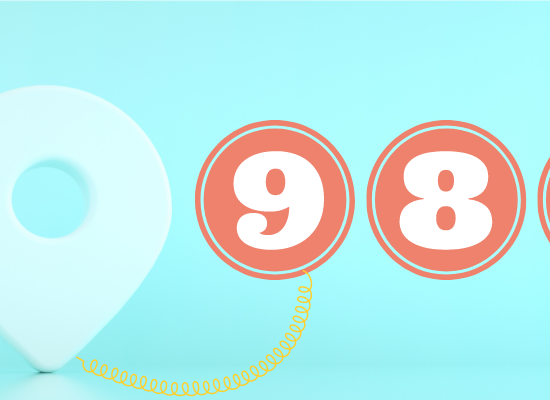
Stephanie Hepburn is a writer in New Orleans. She is the editor in chief of #CrisisTalk. You can reach her at .
As the Covid variant Omicron surged across the United States, people in hard-hit communities were flooding nearby emergency rooms—some because they were sick with the virus, while others were in search of Covid tests. Dr. Benjamin Druss says emergency room use during times of crisis holds up a mirror to the healthcare system, highlighting its gaps. “It’s been this huge stress test,” he notes, “showing us how we use emergency rooms, both for medical and mental healthcare.” Dr. Druss is a professor and Rosalynn Carter chair in mental health at Emory University’s school of public health. He says peer-led, whole-person care models could help ease the crisis-to-emergency room pipeline.
The emergency room is where problems in the broader healthcare system converge, where chasms in care and socioeconomic inequity reveal themselves. Long before the pandemic, the E.R. was and continues to be the default mental health provider for people experiencing a crisis. It’s also where people experiencing behavioral health non-emergencies go when there’s an inadequate crisis continuum and barriers to care. During the pandemic, an increased proportion of people in psychiatric distress have gone to the E.R., especially children.
Dr. Druss is one of a handful of psychiatrists in the nation based in a university’s public health school. He’s dedicated his career to improving people’s overall well-being by integrating mental, physical, and public health exemplars. While the concept of integrated care isn’t novel, he points out that it’s historically resulted in tools for better management of mental health challenges in primary care settings, not the inverse. “Research well documents that people with mental health conditions often experience poor physical health and early mortality,” he says. This is particularly true for people with serious mental illness. “They often get worse medical care and have adverse health behaviors like smoking, less physical activity, and poor diet.”
People with serious mental illness tend to be financially marginalized, resulting in inadequate access both to healthcare and healthy lifestyles. In fact, Dr. Druss has found that the burden of comorbidities is cumulative, with people experiencing mental and medical health conditions and poverty most likely to report fair or poor health. According to his research, regardless of combined conditions, poverty consistently increases the likelihood of participants reporting fair or poor health.
In the time of Covid, studies looking at 2020 data found the risk of infection, hospitalization, and death from the virus was higher among people with a mental illness. One study revealed that mortality increased by 50% for those with a prior mental health history.
When Dr. Druss began teaching at Emory in 2003, he quickly discovered that Georgia is a national leader in innovative peer services models and principles. In developing peer-led whole health programs, he and his team have integrated many components central to the peer support movement—like modeling self-management and healthy behaviors. “We’ve taken all the elements we know to be helpful for mental health recovery and applied them to physical health self-management,” he says. The two bleed into one another. “Physical and mental health are closely connected. If you’re effectively managing your mental health, you’ll be more successful around physical health and vice versa.”
Researchers have long focused on the mental health-mortality gap. “People with mental health conditions, but particularly serious mental health conditions,” says Dr. Druss, “die between 10 and 20 years before the general population.” When he started looking at the gap, he assumed it existed because people don’t get the medical care they need, and if they just got better medical care, that would essentially solve the problem. “I’m increasingly convinced it has much more to do with not having a sense of hope or purpose,” he says. That’s something all people need. “It’s part of the human condition.”
The peer-led mental health recovery model focuses on connection and having a sense of purpose, whether through community engagement, hobbies, or work. These seemingly intangible concepts are equally crucial for both mental and physical wellbeing. “The ‘active ingredient’ in peer services,” laughs Dr. Druss, “is conveying, communicating, and modeling recovery through their own lived experience.”
When examining how to extend a person’s life, there must be a lens on quality of life. In public health, that’s called quality-adjusted life years: how long people will live and their quality of life while they’re alive. “We can measure it by traditional metrics like blood pressure, cholesterol, and weight,” says Dr. Druss, “but also, as people in the consumer movement say, ‘Do you have a job and something to do on a Saturday night?’” The latter points to a person’s quality of life—their connections with others and a sense of purpose, the feeling that they’re perhaps part of something bigger.
Dr. Druss has also drawn from chronic disease self-management in developing peer-led, whole-person care models. He studied the work of Dr. Kate Lorig at the Stanford School of Medicine. She pioneered chronic disease self-management in 1979, developing the Arthritis Self-Help Course, a skills program for people experiencing arthritis that became the prototype for self-management for a range of illnesses, including cancer, diabetes, heart disease, HIV, lung disease, pain, and stroke. Like the mental health recovery model, peers lead and deliver Dr. Lorig’s interventions. (Here, peers are people with chronic health conditions.) Dr. Druss found parallels between chronic disease self-management and the mental health recovery model based on the underlying premise that people equipped with self-care tools and peer coaching become powerful advocates and agents of change for themselves. “Peer-led self-management interventions,” he says, “allow people to be in charge of their own health.”
Person-led and -centered approaches, whether in healthcare, employment, or another facet of life, give people much-needed autonomy. Dr. Robert E. Drake, co-developer of the supported employment model Individual Placement and Support (IPS), told #CrisisTalk in 2020 that the mental health field has historically underestimated the power of autonomy in crisis prevention and recovery. He said that people with mental health challenges want to be independent, just like everyone else. However, healthcare and financial systems often convey to patients that “they’re broken, not competent, and can’t succeed in life,” leading to feelings of hopelessness.
Bridging the gap between the mental health recovery model and chronic disease self-management has reaped life-extending benefits, ones that state and community leaders should pay attention to as they build out their crisis systems to prepare for 988, the three-digit number for mental health, substance use, and suicide crisis that telecom companies must make “live” by July 16. In 2009, Dr. Druss collaborated with Dr. Lorig to develop and pilot the Health and Recovery Program, a six-session medical self-management intervention delivered by mental health peers. In 2010, they published the pilot’s results in Schizophrenia Research. By the six-month follow-up, participants in HARP fared better than those in usual care—a 7.7% improvement compared to a 5.7% decline, respectively. They were also 16.5% more likely to attend one or more primary care visits. Dr. Druss and Dr. Lorig found that the largest improvements transpired among socially and financially disadvantaged participants.
Studies have shown that people who take part in peer support programs have fewer crisis events and hospitalizations and experience improved social functioning, quality of life, and recovery, even if they have co-occurring mental health and substance use challenges. Peers themselves also gain from the experience. For example, a state-wide survey in Pennsylvania examined the benefits of working as a Certified Peer Specialist. Besides employment—a critical intervention in crisis prevention and recovery, CPSs experienced reductions in hospitalization and increased recovery-oriented gains. Most participants reported that the training gave them essential skills that helped their recovery, making them more hopeful and confident. They also felt that giving back to others aided their resiliency and recovery.
Dr. Druss points out that people can’t achieve overall health without addressing mental health. Similarly, it’s harder for a person to achieve mental health recovery if they’re not physically healthy. “They’re interconnected,” he says. “When people feel better physically, they feel better mentally and emotionally.” He hopes that state and community leaders build out their 988 systems with whole-person well-being in mind. “If the goal with 988 is to reduce the overall use of emergency rooms, and instead, build a community-based, person-centered, and public health-oriented system, it will have to include mental health and medical support self-management recovery.”









